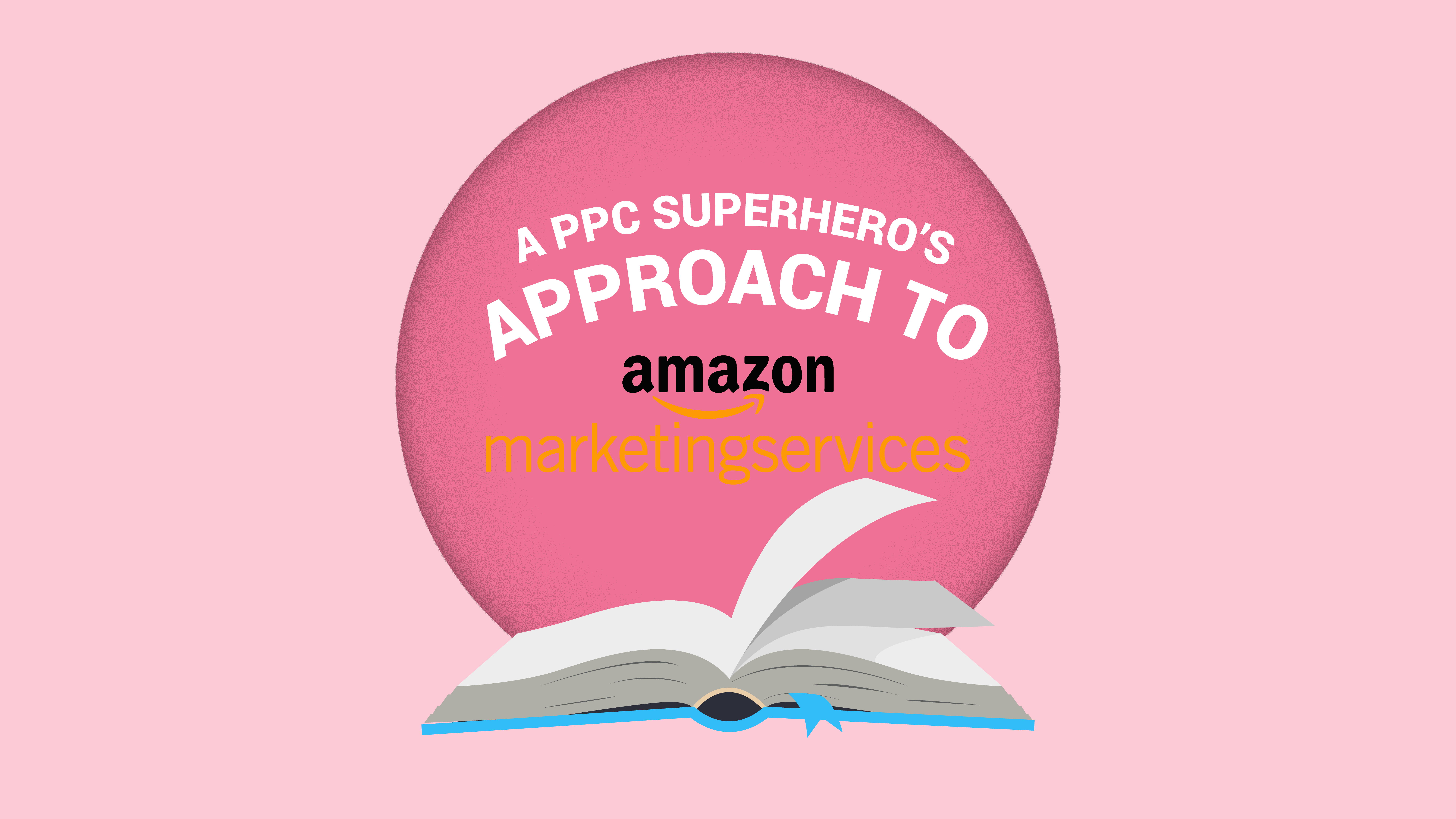There are over 300 million active Amazon users globally. Think about that for a second. These are all users who have an intent to purchase when they visit the website. With high conversion rates and low cost-per-clicks, Amazon is an absolute goldmine for advertising.
Amazon Marketing Services (AMS) offers great targeting possibilities thanks to its rich sources of user data from shopping activity and media consumption. There’s also a competitive advantage in the fact that few retailers are currently advertising with AMS in comparison to Google Ads and Bing.
Even so, I haven’t seen many advertisers putting out best-practice guides. Has anyone really done anything remarkable with it yet? I’ve not seen anything more advanced than a couple of beginner’s guides.
Enter the PPC superhero…to talk about something that’s not exactly PPC, but certainly similar in terms of the required superpowers.
A brief refresher on AMS
Let’s start with ad formats. Firstly we have Headline Search Ads, which are banner ads appearing above search results. They are keyword targeted, and are great for upper-funnel activity such as raising brand awareness and building consumer trust.
Second, AMS offers Product Display Ads, which appear below the “Add to Basket” button on product pages. These ads use product or category targeting instead, so they’re work well for competitor targeting or upselling products.
Finally, there are Sponsored Product Ads, which are a form of native ad that appear with organic results. They can be set up with manual keyword targeting or in automatic mode, with Amazon dynamically deciding where to show them.
Knowing when to go manual
The automated approach is a great place to begin a new campaign, to research the best-performing keywords and move from using broach match to exact match. However, just like DSAs in Google Ads, automated campaigns aren’t quite up to par with a strong manual build. For that reason, even when starting out in AMS, I recommend always building towards a strong manual approach.
You might think that’s overwhelming if you’re familiar with Amazon’s recommended campaign structure (a whopping 12 campaigns per product!). The Brainlabs way is to categorise them according to product type, not product, which makes account management and optimisation just a lot more practical.
Granular testing and optimising
Amazon has tons of great guidelines for AMS, but it’s super important to adapt best practices on a case-by-case basis. Budget strategy in AMS requires a data-driven approach that takes into account factors like historical data, market differences, and seasonality (e.g. Prime Day). Combined with a good measurement strategy, this feeds directly into optimisations at keyword and product level with the right level of granularity. An optimised performance requires constant testing and learning, especially as the platform improves over time.
This means A/B testing a whole range of variations for ad types, audience targeting, bidding strategies, and products. With a few retail clients, we’ve quickly been able to identify differences in performance between product types, leading to great improvements in budget optimisation. Likewise with ad types. As with other platforms, the key thing is to use data and automation to keep making continual improvements.
The next steps on the roadmap
There’s so much we’re excited about exploring in the near future: Bid+, which enables higher bids on user with greater intent; Amazon store vs. custom-made product landing pages for Headline Search ads; and time-of-day performance testing. There’s also the issue with budgeting; in accelerated mode, they can run out by the middle of the day. Our answer: a budget planning tool that periodically checks spend and can reset the budget cap to adapt spend throughout the day.
We’ve also built a custom reporting dashboard that automatically compiles relevant data for different product and ad types. We can learn faster, which means we can optimise faster – like comparing manual and automated Sponsored Product campaigns, for example, or just comparing a range of product types.
So there you have it. Some of the old PPC rules apply, but there’s lots of new skills necessary for AMS. Whether it’s for Google Ads, Amazon, other channels, we’ve always been about staying ahead of the curve. There’s nothing more exciting than taking on a new challenge with a brand spanking new tech stack combined with some of that Brainlabs secret sauce to take performance marketing to the next level!



